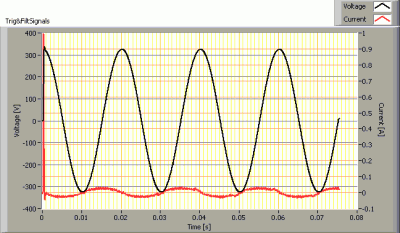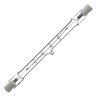Lampreparatur im Studentenwohnheim
Posted by Marcel van der Steen in Energy saving, Explanation, Lamps No Comments» Dieser Artikel zeigt warum eine Leuchtstoffröhre nicht mehr funktionierte und die Erfahrung deren Reparatur. Diese Aktion hat die Folge, dass man jetzt die alte Leuchte niet wegsmeißen muss sondern weiter verwenden kann, aber auf Grund des Alters der Leuchte war es nicht so einfach sie sicher zu reparieren.
Dieser Artikel zeigt warum eine Leuchtstoffröhre nicht mehr funktionierte und die Erfahrung deren Reparatur. Diese Aktion hat die Folge, dass man jetzt die alte Leuchte niet wegsmeißen muss sondern weiter verwenden kann, aber auf Grund des Alters der Leuchte war es nicht so einfach sie sicher zu reparieren.
Solarzellenpaneele oder Sonnenkollektoren?
Posted by Marcel van der Steen in Energy saving, Explanation, Solar energy No Comments» In diesem Artikel erkläre ich wie ich eine Wahl getroffen habe zwischen Solarzellenpaneele (oder kürzer Solarpaneele, bringen elektrische Energie) und Sonnenkollektoren (bringen Wärme-energie). Ich habe schön eine Wärmepumpe (Nutzung der Erdwärme mittels Wasser) und vielen raten mir an Sonnenkollektoren zu verwenden, damit die warmes Wasser machen wenn es viel Sonne gibt. Das Pufferfass wird so extra aufgewärmt durch warmes Wasser von den Kollektoren damit die Wärmepumpe keine (elektrische) Energie anwenden muss für Heizung. Dazu kommt noch dass für die Heizung warmes Wasser eine Wärmepumpe ein niedrigeres Leistungszahl hat weil die Temperatur des Wassers hoch sein muss (45 – 50 Grad).
In diesem Artikel erkläre ich wie ich eine Wahl getroffen habe zwischen Solarzellenpaneele (oder kürzer Solarpaneele, bringen elektrische Energie) und Sonnenkollektoren (bringen Wärme-energie). Ich habe schön eine Wärmepumpe (Nutzung der Erdwärme mittels Wasser) und vielen raten mir an Sonnenkollektoren zu verwenden, damit die warmes Wasser machen wenn es viel Sonne gibt. Das Pufferfass wird so extra aufgewärmt durch warmes Wasser von den Kollektoren damit die Wärmepumpe keine (elektrische) Energie anwenden muss für Heizung. Dazu kommt noch dass für die Heizung warmes Wasser eine Wärmepumpe ein niedrigeres Leistungszahl hat weil die Temperatur des Wassers hoch sein muss (45 – 50 Grad).
Dieser Artikel macht einen Energie- und Kostenvergleich zwischen beide Forme von Energieerzeugung.
 The S/P ratio has been explained before on this website. Now two Technical Memorandums (TM 12-12 and TM 24-13) of the Illuminating Engineering Society of North America (IESNA) elaborate on how and how much advantage one can make on using light with a high S/P ratio.
The S/P ratio has been explained before on this website. Now two Technical Memorandums (TM 12-12 and TM 24-13) of the Illuminating Engineering Society of North America (IESNA) elaborate on how and how much advantage one can make on using light with a high S/P ratio.
In short it comes down to this: at low environmental light levels (such as in streets at night with street lights on) your eye works with night vision (you loose the colors in your view but still can see a lot of details and overview with only moon light and light from stars). Lamps with a specific light (a specific spectrum) suited for this night vision (meaning high S/P ratio) will lead to an increase of brightness perception. So we need less light for the same brightness impression.
A second effect is valid for light levels indoor (reading, work on computer, work on electronic and mechanic setups, repairing things etc). When you use light with a high blue content (cold white, meaning also high S/P ratio) then this results in a decrease of pupil size which results in a sharper view. Thanks to this the average light level can go down to still have the same view-efficiency.
Inrush current for (led) light bulbs
Posted by Marcel van der Steen in Explanation, Lamps 27 Comments» In this article I explain the inrush current phenomenon for cold lamps. This is the current that flows in a short time period just after switch on of the (grid)voltage. This current peak for an (led) light bulb is directly comparable to that of a motor. The inrush current measurement function of for instance a digital multi meter is for the lamp inrusch current not suitable.
In this article I explain the inrush current phenomenon for cold lamps. This is the current that flows in a short time period just after switch on of the (grid)voltage. This current peak for an (led) light bulb is directly comparable to that of a motor. The inrush current measurement function of for instance a digital multi meter is for the lamp inrusch current not suitable.
The measurements on the inrush current at the measured lamps is done in a way that gives relevant info of the peak currents and a parameter is derived that is needed in selecting the correct fuses.
Dimming of linear halogen lamp with phase cut dimmers
Posted by Marcel van der Steen in Explanation, Lamps No Comments» This is an article that shows the dimming results of a linear halogen light bulb that is dimmed by forward phase-cut (LR) and backward phase-cut dimmers (tronic, RC). The halogen lamp is well dimmable in the sense of dimming the amount of light. The images created show what that means in terms of light output as a function of dim-position.
This is an article that shows the dimming results of a linear halogen light bulb that is dimmed by forward phase-cut (LR) and backward phase-cut dimmers (tronic, RC). The halogen lamp is well dimmable in the sense of dimming the amount of light. The images created show what that means in terms of light output as a function of dim-position.
What is remarkable is the amount of power still being high when the light has been dimmed a lot.
The graphs can be used to compare other types of lamps that are dimmed, in order to be able to judge whether the dimming works well or not.
EU Energy label for lamps Update Sept 2013
Posted by Marcel van der Steen in Explanation No Comments»![]() One of my customers informed me about an update of the EU Delegated Regulation (A regulation shall have general application. It shall be binding in its entirety and directly applicable in all Member States) about the energy labelling of lamps. I read through the regulation and present here a summary.
One of my customers informed me about an update of the EU Delegated Regulation (A regulation shall have general application. It shall be binding in its entirety and directly applicable in all Member States) about the energy labelling of lamps. I read through the regulation and present here a summary.
The regulation states that these new labels need to be introduced a of Sept 2013 (for new products). OliNo will deliver the new labels (6 variants in total) derived from our measurements and completed with the supplier’s name or trade mark and the supplier’s model identifier.
 With the ledlamps becoming more and more powerful and given that the blue content of the light from leds in increasing as well, there is a growing concern for blue light hazard.
With the ledlamps becoming more and more powerful and given that the blue content of the light from leds in increasing as well, there is a growing concern for blue light hazard.
The IEC 62471:2006 norm explains about how to measure Blue Light Hazard, tha could lead to photoretenitis. This norm has an update in 2008. That update refers to the European Directive 2006/25/EC that contains the ELs. This article explains the way OliNo deals with this norm to measure the blue light hazard (only as an indication!) of the lamps it measures.
Update 28 April 2012: the dimensions of the brightest part of the illuminated part are taken for the calculation (of interest only in non-homogeneous sources).
Non-visual effects of ocular light on human beings – The biological factors
Posted by Marcel van der Steen in Explanation 2 Comments» This article explains a bit about the biological effects of light on human beings. It appears that next to rod and cones there are other cells sensitive to a certain part of the light spectrum and that influences our daily rhythm (circadian cycle); this is the cycle of sleep and being awake, where a hormone like melatonin plays an important role.
This article explains a bit about the biological effects of light on human beings. It appears that next to rod and cones there are other cells sensitive to a certain part of the light spectrum and that influences our daily rhythm (circadian cycle); this is the cycle of sleep and being awake, where a hormone like melatonin plays an important role.
The spectrum of the light enables to compute the biological effect that it can provoke, amongst others in (1) the suppression of melatonin in the night and in (2) shifting the circadian phase. I used the vornorm DIN V 5031-100:2009-06 as the basis of the computation of several interesing parameters coming from the light spectrum.
Practical measurements on a 12V DC dimmer used by OliNo
Posted by Marcel van der Steen in Explanation, Lamps No Comments» When OliNo measures lamps working on 12 V DC and these lamps are dimmable, then it as a 12 V DC dimmer available to use.
When OliNo measures lamps working on 12 V DC and these lamps are dimmable, then it as a 12 V DC dimmer available to use.
This dimmer is put between the 12 V DC power supply output and the lamp itself.
It appears that this dimmer uses a pulse width modulation (PWM) to switch the voltage to the lamp between a high level and a low level; this at a speed invisible to the human eye. It is a very efficient way to adjust the average level of the voltage that is output to the lamp.
This article gives a number of measurements on the output of the dimmer to show what the dimmer does with the voltage to the lamp.
![]() On 27 January 1998 the commission issued a directive that requires energy labels for household lamps.
On 27 January 1998 the commission issued a directive that requires energy labels for household lamps.
In this article the main items from the directive are mentioned and the energy label itself is shown. OliNo will add these into the new lamp measurement articles.
On request this label can be added to already existing articles at a small cost.
Update 9 Nov 2010: on request a graph is added that indicates the performance of the lamp in a Lumen-Watt field. This is a visual indication of in what classification the lamp falls and how well within that classification it is positioned.
Update 11 May 2013: an update has been done on the labels, see also this article.





Recent Comments